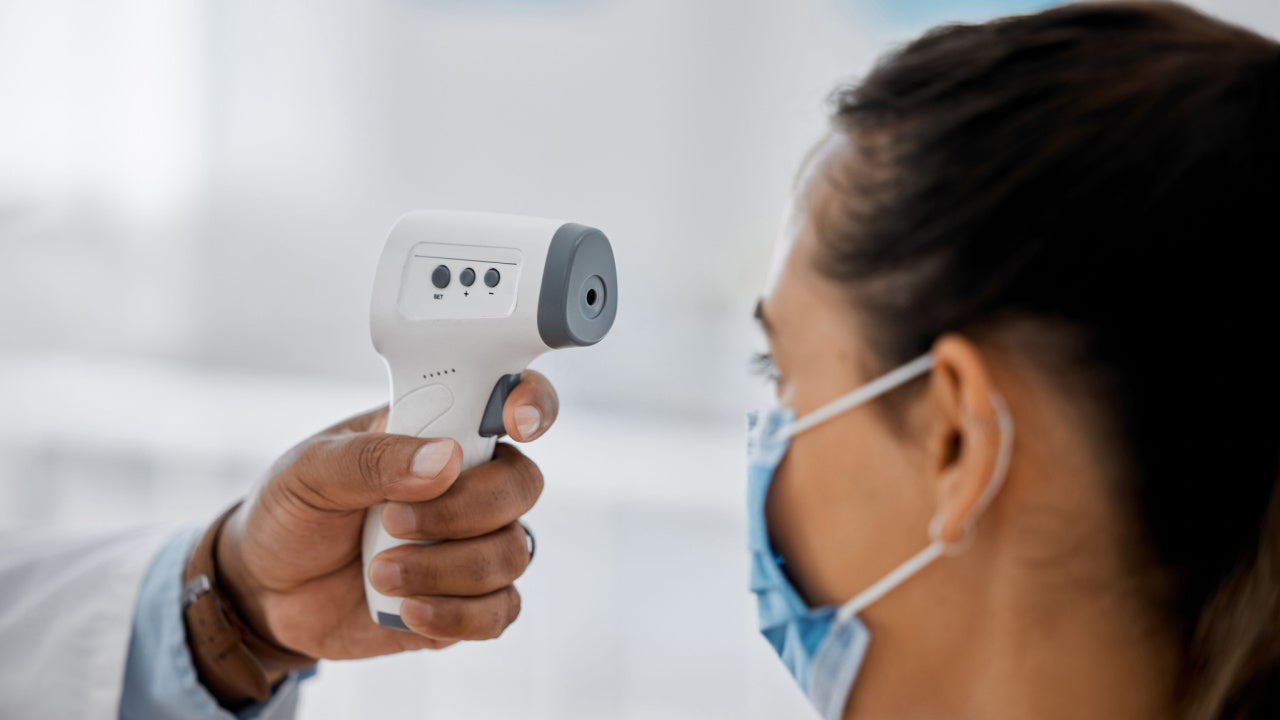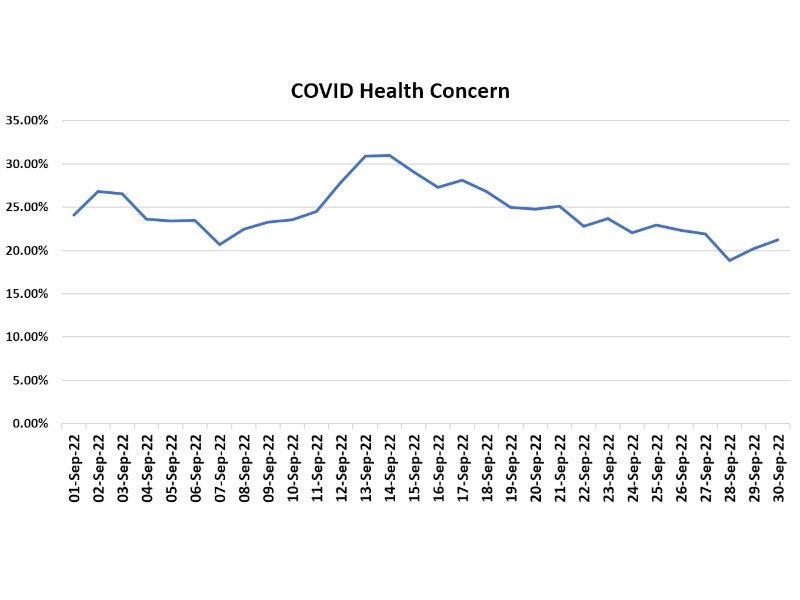
The health concern over COVID-19 in September 2022 increased by two percentage points to 24.5%, compared to 22.3% recorded in August 2022, shows the COVID-19 concern index, which is measured by responses to an ongoing poll Verdict launched in March 2020. The poll has been tracking how the concerns over coronavirus have been changing over time.
The poll asked how concerned the respondents were about the spread of coronavirus and included five options to choose from – very concerned, slightly concerned, neither concerned nor unconcerned, not very concerned, and not concerned.

The concern index is based on respondents who answered that they are very concerned about the spread of COVID-19.
Concerns decreased in the second week of September
The COVID-19 concern in the beginning of September averaged at 25.26% increasing from 19.3% towards the end of August, despite the number of new cases decreasing by 12% globally between 29 August and 04 September 2022, according to data collected by the World Health Organization (WHO).
The concern, however, decreased in the second week of September to an average of 23.04%, coinciding with the decline in the number of new cases by 28% between 05 September and 11 September 2022. All six WHO regions including the Western Pacific Region, the African Region, the South-East Asia Region, the Region of the Americas, the European Region, and the Eastern Mediterranean Region reported a decrease in new cases by 36%, 33%, 20%, 27%, 15% and 19%, respectively.
COVID-19 concerns rise in the third week of September
COVID-19 health concern increased to 28.7% in the third week of September, despite the number of new cases remaining stable globally between 12 September and 18 September 2022, compared to the previous week.
How well do you really know your competitors?
Access the most comprehensive Company Profiles on the market, powered by GlobalData. Save hours of research. Gain competitive edge.

Thank you!
Your download email will arrive shortly
Not ready to buy yet? Download a free sample
We are confident about the unique quality of our Company Profiles. However, we want you to make the most beneficial decision for your business, so we offer a free sample that you can download by submitting the below form
By GlobalDataThe number of new cases remained stable across all the six WHO regions, with the African Region, Eastern Mediterranean Region and the Region of the Americas reporting 35%, 14% and 12% decline in new cases, respectively.
The concern fell gradually to 23.76% in the fourth week of September, coinciding with the decrease in the number of new cases by 11% globally between 19 September and 25 September.
The number of deaths also decreased by 18% with about 8,900 fatalities reported, according to the WHO. The African Region reported the highest decline in new cases at 33%, followed by the Western Pacific Region (19%), the Region of the Americas (15%), the South-East Asia Region (11%), and the Eastern Mediterranean Region (8%).
Concern decreases towards the end of September
Towards the end of September, the COVID-19 concern decreased further to 20.9% coinciding with the decline in the number of new cases by 6% globally between 26 September and 02 October, as revealed by WHO data. The number of deaths decreased by 12% from the previous week, with approximately 8,300 fatalities reported.
As per sequences collected by the Global Initiative on Sharing Avian Influenza Data (GISAID) between 03 September and 03 October, the Omicron variant accounted for 99.9% of the sequences. The BA.5 lineages were the dominant strain globally accounting for 80.8% of sequences, followed by BA.4 and BA.2 omicron lineages, which accounted for 7.8% and 3.1% of sequences, respectively. Meanwhile, during the same week, unassigned sequences (presumably Omicron) represented 8.3% of sequences.
The analysis is based on a total of 686 responses received from the readers of Verdict network sites between 01 and 30 September 2022.







